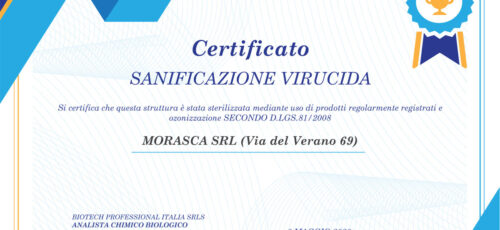Sanification with ozone and Certifications

Sanification with ozone is the most advanced, efficient and environmentally sustainable technique currently on the market. Unlike the most common disinfection and disinfestation methods used in recent decades, ozone has advantages from all points of view.
Known since the end of the 18th century, this gas has been extensively used in the field of food preservation and medicine thanks to its safety and the absence of side effects. With the strongest oxidizing power in nature, it is 120 times more powerful than chlorine in the elimination of viruses, bacteria and fungi, ensuring a success of over 99% in a few minutes of application.
Ozone is a particularly unstable gas, generated by the reaction of electrical discharges with oxygen. The characteristic “smell of rain” is given by the passage of lightning that breaks the electrical bond of the oxygen molecules, generating ozone. In high concentrations, ozone attacks the protective membrane of bacteria, destroying them, and inhibits the infectious properties of viruses, completely eradicating them.
With the same ease with which it is created, ozone decays in a short time, at the end of its sanitizing work, returning to its original form, oxygen, the only residue left.
After 30 minutes from the intervention, the room is completely sanitized, free of odors, toxic residues and well oxygenated, at a cost, both economic and environmental, considerably lower than the use of chemical agents.

